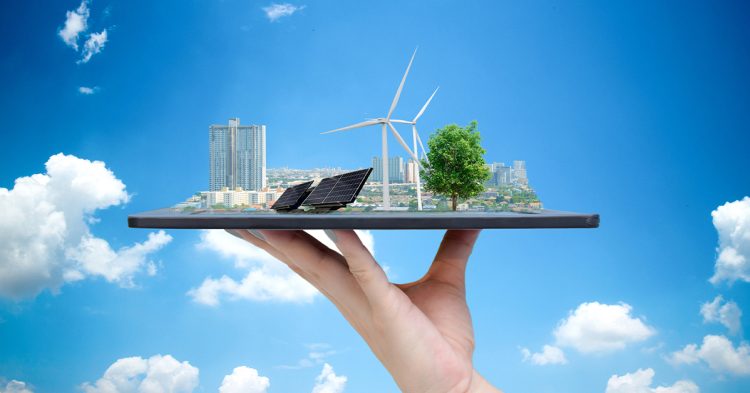The rapid advancement of green energy technologies has made them one of the most pivotal forces shaping the future of global power systems. In response to growing environmental concerns, resource depletion, and climate change, green energy, which includes renewable sources like solar, wind, hydro, and biomass, is transitioning from an alternative niche to a mainstream solution for global energy demands. This shift not only aims to reduce the carbon footprint but also promises to transform economies, reshape energy markets, and redefine how we produce and consume energy.
This article explores the pivotal role of green energy technologies in the modern energy landscape. We will discuss the types of renewable energy, technological advancements, their environmental and economic benefits, and the challenges of transitioning to a green energy future. Furthermore, we will examine case studies from across the world to understand how green energy is being integrated into national energy strategies and the broader global transition.
1. The Need for Green Energy Technologies
1.1 Environmental Impact and Climate Change
The burning of fossil fuels for electricity generation, heating, and transportation has been the major driver of greenhouse gas emissions since the industrial revolution. These emissions have led to:
- Global warming: A rise in global temperatures due to the accumulation of carbon dioxide (CO₂) and methane in the atmosphere.
- Air pollution: Harmful emissions contributing to respiratory diseases, acid rain, and the degradation of ecosystems.
- Resource depletion: Fossil fuels are finite resources, and continued extraction has environmental and economic consequences.
The transition to green energy technologies is a critical strategy in mitigating these impacts. By shifting to renewable sources of energy, the global energy system can reduce emissions, slow climate change, and promote sustainable energy practices.
1.2 Energy Security and Geopolitical Considerations
Relying on fossil fuel imports for energy has created geopolitical vulnerabilities for many countries, leading to energy insecurity. For example, countries that depend heavily on oil imports are often exposed to price fluctuations and political instability in the oil-producing regions. In contrast, green energy technologies like solar and wind are abundant and locally accessible, which enhances energy security by allowing nations to generate their own power.
Moreover, the decentralized nature of renewable energy generation reduces the risks of supply chain disruptions and contributes to energy independence. As a result, many governments are now prioritizing the transition to green energy technologies to safeguard their national security and reduce reliance on foreign energy sources.
2. Key Green Energy Technologies
Green energy technologies encompass a broad range of innovative systems that harness natural resources such as sunlight, wind, water, and organic matter to generate electricity, heat, or biofuels. Below are some of the most prominent green energy technologies that are currently reshaping the global energy landscape:
2.1 Solar Energy
2.1.1 Photovoltaic (PV) Solar Panels
Photovoltaic (PV) technology is perhaps the most well-known form of solar energy. PV panels convert sunlight directly into electricity using semiconductor materials, most commonly silicon. Over the past decade, advancements in solar cell efficiency, lower manufacturing costs, and better energy storage solutions have made solar power one of the fastest-growing energy sources globally.
Key features:
- Scalability: Solar power systems can be deployed in both large-scale power plants and small rooftop installations.
- Low emissions: Once installed, solar power generates zero emissions, contributing to cleaner air and reducing the carbon footprint.
2.1.2 Concentrated Solar Power (CSP)
Concentrated solar power (CSP) uses mirrors or lenses to focus sunlight onto a small area, creating intense heat that can be used to generate electricity through steam turbines or Stirling engines. CSP is most effective in areas with high solar insolation and is typically deployed in large-scale plants.
Advantages:
- Energy storage: CSP systems can incorporate thermal energy storage, enabling electricity generation even when the sun isn’t shining.
- Efficiency: CSP can achieve higher efficiencies than standard photovoltaic systems due to its ability to concentrate sunlight.
2.2 Wind Energy
2.2.1 Onshore Wind Farms
Onshore wind energy is one of the most established forms of renewable energy. Wind turbines generate electricity by converting the kinetic energy of wind into electrical power. With the continued decrease in turbine costs and the improvement in wind forecasting technologies, onshore wind has become an increasingly cost-competitive energy source.
Key benefits:
- Cost-effective: Onshore wind is one of the cheapest sources of new electricity generation in many regions.
- Scalability: Onshore wind farms can range from a few turbines in rural areas to large utility-scale projects.
2.2.2 Offshore Wind Farms
Offshore wind farms are located in bodies of water and have higher wind speeds compared to onshore wind, making them more efficient. Offshore wind turbines can be placed in deeper waters and farther from shore, reducing land use conflicts and benefiting from stronger and more consistent winds.
Challenges:
- Higher installation costs: Offshore wind farms require more complex installation processes and specialized infrastructure.
- Environmental considerations: Offshore installations must minimize their impacts on marine life and ecosystems.
2.3 Hydropower
2.3.1 Traditional Hydropower
Hydropower has been a dominant source of renewable electricity for over a century. Dams on large rivers store water that is released through turbines to generate power. Hydropower plants provide baseload power, meaning they can operate continuously, 24/7.
Advantages:
- Reliable and constant: Hydropower offers stable and predictable power output, ideal for grid stability.
- Long lifespan: Hydropower plants have long operational lifespans, often exceeding 50 years.
2.3.2 Small-Scale and Run-of-River Systems
While large hydropower projects are often controversial due to their environmental impact and displacement of communities, small-scale hydropower and run-of-river systems offer more localized, sustainable alternatives. These systems generate electricity without the need for large reservoirs and have minimal environmental footprints.
2.4 Biomass and Bioenergy
2.4.1 Biomass Power Plants
Biomass energy comes from organic materials, including wood, agricultural residues, and waste. Biomass power plants burn these materials to produce heat, which is used to generate electricity or produce heat for industrial processes.
Advantages:
- Waste-to-energy: Biomass technologies can convert waste materials into valuable energy, reducing landfill use.
- Carbon neutrality: Biomass is considered carbon-neutral because the CO₂ released during combustion is offset by the carbon absorbed during plant growth.
2.4.2 Biofuels
Biofuels are derived from biomass and used in transportation, particularly in ethanol and biodiesel. These fuels are renewable alternatives to gasoline and diesel and are seen as essential to reducing transportation sector emissions.
Challenges:
- Land use: Large-scale biofuel production may compete with food crops, raising concerns over land availability.
- Efficiency: Current biofuels are not as energy-dense as petroleum products, which limits their ability to fully replace fossil fuels.

3. The Benefits of Green Energy Technologies
3.1 Environmental Benefits
The primary appeal of green energy is its minimal environmental impact. Unlike fossil fuels, which contribute to air pollution, acid rain, and climate change, renewable energy technologies:
- Reduce greenhouse gas emissions: Green energy systems emit little to no CO₂ during operation.
- Preserve ecosystems: They often have a smaller environmental footprint compared to traditional power generation methods.
3.2 Economic Benefits
The adoption of green energy technologies can drive economic growth in several ways:
- Job creation: The renewable energy sector is labor-intensive, creating jobs in manufacturing, installation, and maintenance.
- Energy independence: By relying on locally available renewable resources, countries can reduce their dependence on imported fossil fuels, improving their energy security.
- Technological innovation: Green energy technologies have spurred advancements in fields like materials science, battery storage, and grid management.
3.3 Social and Health Benefits
Green energy contributes to social well-being by:
- Improving public health: The reduction in air pollution from burning fossil fuels leads to fewer cases of respiratory diseases and heart conditions.
- Energy access: Green energy technologies, particularly solar and wind, are ideal for off-grid applications in rural or remote areas, providing electricity where traditional infrastructure is lacking.
4. Challenges and Barriers to Widespread Adoption
4.1 Intermittency and Reliability
Many green energy technologies, especially solar and wind, are intermittent — meaning they do not generate power consistently. This creates challenges for grid stability and reliability.
- Energy storage: Advancements in battery technologies (such as lithium-ion batteries and pumped hydro storage) are essential to store excess energy generated during periods of high output for later use.
- Grid integration: Smart grid systems and better forecasting technologies are needed to ensure renewable energy can be reliably integrated into existing grids.
4.2 Initial Investment and Infrastructure
The upfront capital costs of renewable energy technologies can be high, particularly for large-scale projects like offshore wind farms and concentrated solar power plants. Governments and private companies must work together to lower these costs through incentives, subsidies, and investments in infrastructure.
4.3 Land and Resource Use
Large-scale renewable projects, such as hydropower dams, wind farms, and solar arrays, require significant land areas, potentially leading to land-use conflicts. Sustainable development practices are necessary to minimize these impacts.
5. The Global Transition to Green Energy
5.1 Policy and Government Support
Government policies, regulations, and incentives play a crucial role in driving the transition to green energy. Many countries have set ambitious renewable energy targets as part of their commitment to climate agreements such as the Paris Agreement.
5.2 Case Studies
- Germany’s Energiewende: Germany’s energy transition plan aims to phase out nuclear power and fossil fuels while increasing renewable energy share to 80% by 2050.
- China’s Solar Expansion: China has become the world’s largest producer of solar panels and is investing heavily in wind and hydroelectric power.
6. Conclusion
Green energy technologies are no longer a distant future but a present reality. As the world confronts the urgent challenges of climate change, resource depletion, and energy insecurity, the shift toward renewable energy systems represents an essential path forward. The continued development of green energy technologies, supported by policy frameworks and societal investment, will not only reduce the environmental impact of energy generation but also reshape the global economy, create new job opportunities, and foster a more sustainable future.
The global movement toward green energy is not merely a trend but a necessary step for a cleaner, safer, and more resilient world. As the technology continues to evolve, its potential to revolutionize the energy sector is immense — and the time to act is now.












































